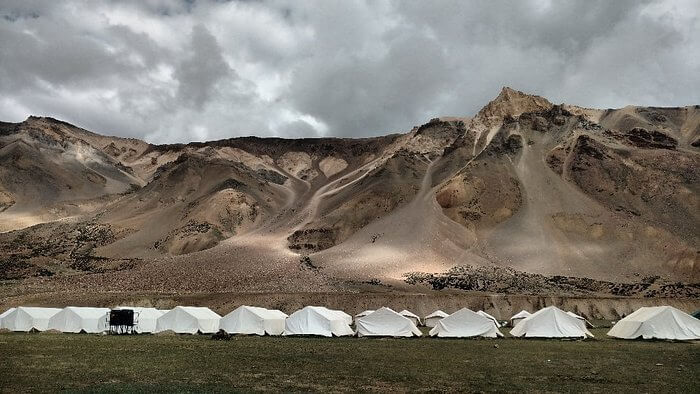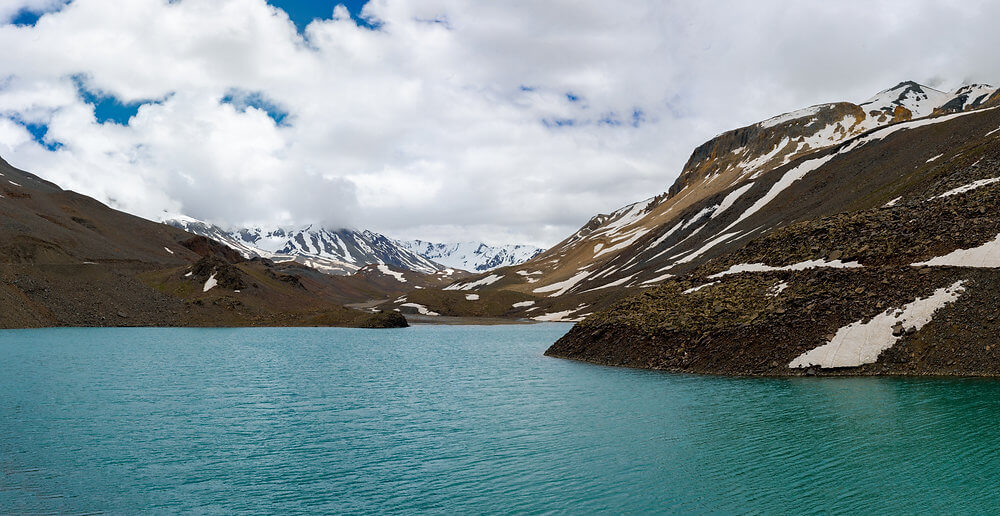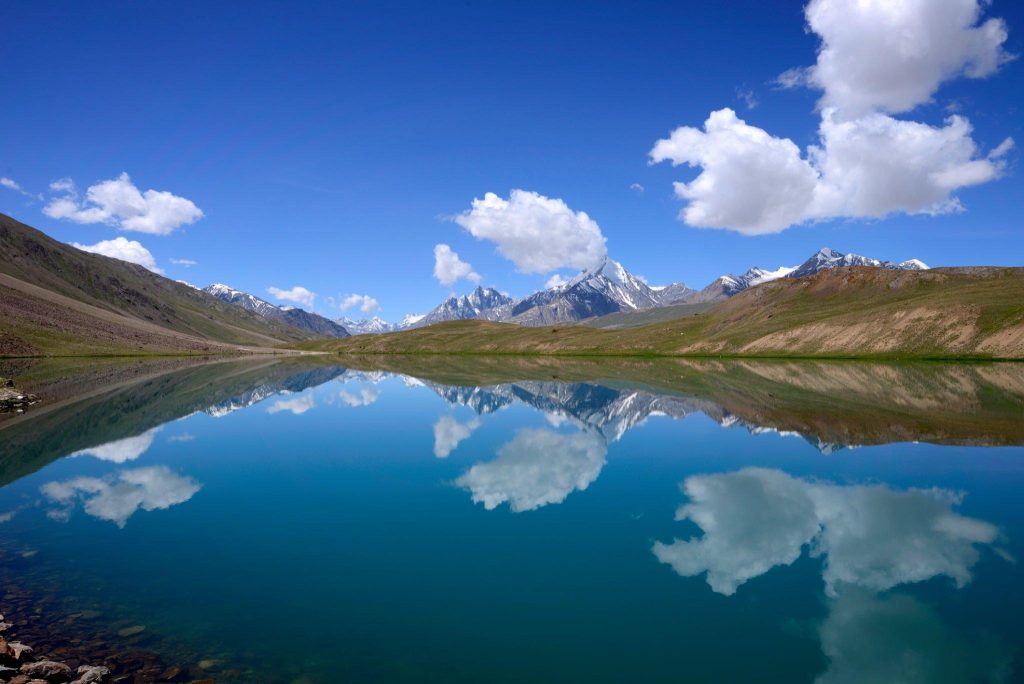Spiti Valley Tour Package
Spiti Valley Honeymoon Tour Package
Spiti Valley Family Tour Package
Spiti Valley Group Tour Package
Spiti Valley Bike Trip 8N/9D
Experience the serene beauty of Spiti Valley in February
Discover the winter wonderland of Spiti Valley in February, when snow-capped mountains and immaculate scenery come together to create a breathtaking image. With the scenery covered in a layer of snow, this month has a certain appeal despite the cold weather. For those looking for a calm getaway from the bustle of city life, February in Spiti is ideal. Admire the magnificent vistas of icy rivers, historic monasteries, and quaint towns. Spiti Valley during February offers a serene and beautiful escape, making it the perfect location for a relaxing winter break, regardless of your interests—adventure seekers or nature lovers. This February, take in the splendour of the snow-capped Spiti Valley!
Book here Spiti Valley Tour Packages.
Weather and Climate in Spiti Valley during February
Spiti Valley experiences its lowest temperatures throughout this month, making for an atmosphere that is both demanding and alluring. The average daily temperature is between 5 and 10 degrees Celsius, but the nights are far colder, with an average low of 15 to 20 degrees. Travellers must come prepared, with layers on to stave off the bitter cold.
Sightseeing in Spiti Valley in February
There are a few spots on your sightseeing schedule that you will have to skip. The first one I mentioned will be Chandratal. Following that will come the Kunzum Pass and the entire Manali Kaza stretch. You may be able to visit Kibber, Komik, Langza, Hikkim, and other villages in February, depending on how much snow is on the route. Do not attempt this in your vehicle; instead, rent a local 4×4 vehicle from Kaza. Driving to these settlements on your own in the winter is perilous, so hire a local driver instead. Pin Valley is also open in February. Chitkul, on the other hand, is another destination you may have to skip because the road from Karchham to Chitkul closes in the winter.
Winter Clothes for Spiti in February
Considering the type of weather I mentioned before, you must make sure you bring along your warmest clothing and all of your woollen items. You should be aware of two things. Firstly, your clothing should be able to keep you warm in really cold weather. Secondly, they are resistant to wind. Both light and thick woollens are essential, and good thermals are a close second. Your best companion will be a substantial, well-made, waterproof, and windproof jacket. Make sure the hood on your jacket covers your head and neck. Other accessories include sunglasses, a muffler, woollen socks, waterproof shoes, and waterproof heated gloves.
Top Places To Visit In Spiti Valley
1. Sarchu

People who travel along the Leh-Manali Highway frequently choose to overnight in Sarchu, which is located on the border of Ladakh and Himachal Pradesh. It is 252 kilometres from Leh and 222 km from Manali.
At 4,290 meters above sea level, Sarchu is also known as Sir Bhum Chun. Between the Lachulung La and Baralacha La mountains in the north and south, it is located. It takes roughly two days to travel due to its high altitude and bad road sections. As a result, to unwind, travelers and tourists camp at Sarchu.
The Leh-Manali route passes by the camping area on the Himalayan mountain range, which provides a dual view of the surrounding landscape. Between May and October, a lot of semi-permanent campers are open from where one can slowly admire the natural beauties. Knowing that Sarchu was a significant Silk Road commerce hub is exciting. The nomadic tribes, traders, and adventurers continue to enjoy its popularity.
2. Dhankar Monastery

Dhankar Monastery, also known as Dankhar, Drangkhar, or Dhangkar Gompa, is located in the Himachal Pradesh district of Lahaul and Spiti. The monastery gives a panoramic view of the Best Places to Visit in Spiti Valley and is located precariously on the edge of a cliff at an elevation of 12,774 feet. Dhankar Monastery, one of the world’s 100 most endangered monuments, was constructed a thousand years ago on a mountain that rises 1,000 feet above sea level and offers breathtaking views of the confluence of the Spiti and Pin rivers.
The monastery has gained popularity as a popular tourist attraction since it is one of the major centers of Buddhist art and culture. The Dhankar Hompa features beautiful views in addition to the statue of Dhayan Buddha and a tiny museum that houses sacred texts and artwork. In the village of Shichilling, which is located under the monastery, there is a new monastery that is home to about 150 Gelug school monks. The picturesque Dhankar lake is accessible by a 2 kilometer walk from the monastery.
3. Suraj Tal Lake

Suraj Tal Lake, which is 4950 meters above sea level, is ranked as India’s third-largest lake. Suraj Tale is located in the Best Places to Visit in Spiti Valley. ‘The Lake of Sun God’ is what it literally means. The breathtaking lake located just below the Baralacha pass should unquestionably be seen while here, especially if one enjoys photography. One of the most picturesque and dreamy lakes is the Suraj Tal.
However, the main factor in the lake’s rise to fame is its proximity to the well-known Manali-Leh trail, a popular route for bicycling and trekking excursions that also includes the Baralacha-La Pass. Suraj Tal is therefore intended for those who are both adventurous and devout.
4. Tabo Monastery

One of the oldest monasteries is the Tabo Monastery, which is situated in the Tabo Village of the Best Places to Visit in Spiti Valley at a dizzying height of 10,000 feet. It is, in fact, the oldest monastery in both India and the Himalayas that has always been in operation. The ‘Ajanta of the Himalayas’ is a term used to describe this beautiful monastery.
The monastery’s walls are adorned with intriguing murals and historic paintings, giving rise to its name and similarity to the Ajanta Caves in Maharashtra. The Tabo Monastery, which is proud to have retained the beautiful traditions and heritage of Buddhism in the form of artistic murals, detailed paintings, gorgeous stuccos, and exquisite frescoes, is situated serenely on the left bank of the dazzling Spiti River.
The Archaeological Survey of India has assumed control of maintaining and preserving one of the most historically significant places in the Buddhist civilization. This culturally rich heritage monument, which covers an area of 6300 square kilometers in the chilly desert of the Tabo Valley and is encircled by thick walls made of mud bricks, is widely venerated by Buddhist monks and is second only to the Tholing Gompa in Tibet in terms of importance. The Tabo Monastery, which was built by the renowned Buddhist king Yeshe-O, is today a treasured treasure in the Buddhist world.
5. Chandratal Lake

One of the most stunning lakes, Chandratal Lake, is situated in the great Himalayas at a height of roughly 4300 meters. The lake is the source of the Chandra River and is located on the Samudra Tapu plateau in the Lahaul region of the Lahaul and Spiti district.
The crescent-shaped lake earned the name “Chandra Taal” (Lake of the Moon). Additionally, this lake is one of the two high-altitude wetlands in India that have received the Ramsar designation. It now draws tens of thousands of adventure seekers after serving as a temporary dwelling for Tibetan traders visiting Spiti and the Kullu region. As the day draws to a close, the hue of the water in this sacred lake keeps shifting from reddish to orange to blue to emerald green. The nicest camping spots may be found among vast lengths of green meadows, which are also home to a variety of wildflowers in the spring.
According to legend, Yudhishthira, the eldest of the Pandava brothers, was brought up by God Indra’s chariot from a location near the Chandratal Lake. Due to this feature, a large number of Hindu devotees go to the lake, making it sacred. Although the journey from Batal to Chandratal can be arduous, the breathtaking scenery and charm of the region make it worthwhile. Chandratal Lake appears to be crystal clear as the sun’s light reflects off its surface.
Tips for Travelling to Spiti Valley in February
1. Pack warm clothes: February is one of the coldest months in Spiti Valley, so make sure you bring enough warm clothes to keep you comfortable.
2. Check the weather forecast: It’s important to keep an eye on the weather conditions before you travel to Spiti Valley. Heavy snowfall or avalanche warnings can disrupt your travel plans.
3. Choose the right accommodation: Not all hotels or homestays may be open during the winter season, so make sure you check with your accommodation provider before you book.
4. Be prepared for altitude sickness: Spiti Valley is located at a high altitude, so it’s important to acclimatize properly. Drink lots of water, avoid alcohol and smoking, and take it easy for the first couple of days.
5. Carry enough cash: There are very few ATMs in Spiti Valley, so make sure you carry enough cash with you for your entire trip.
6. Respect the local culture: Spiti Valley is home to several ancient monasteries and temples, so it’s important to dress modestly and be respectful of local customs and traditions.
7. Hire a local guide: If you’re not familiar with the terrain or the local language, it’s a good idea to hire a local guide who can help you navigate the area and communicate with the locals.
Conclusion
Spiti Valley in February can be a challenging but rewarding experience for those who are prepared for extreme cold weather conditions. The valley is mostly covered in snow, and many of the roads are inaccessible due to heavy snowfall. However, the stunning landscapes and unique cultural experiences make it a worthwhile destination for adventurous travelers who are willing to take on the winter elements. It’s important to plan ahead, pack warm clothing and gear, and be prepared for any unexpected weather-related challenges. Overall, the Spiti Valley in February can be an unforgettable experience for those who are up for the adventure.
You can also check our Spiti Valley Tour Packages.
People also ask about Spiti Valley in February
1. Is Spiti Valley closed in February?
The route from the Manali side closes in the winter as soon as Rohtang Pass and Kunzum Pass close, however, the road to Spiti Valley is open year-round through Shimla and Kinnaur. Therefore, visitors need to be aware of the best time to visit Spiti Valley.
2. Is Chandratal open in February?
From January to April, it is impossible to go to Chandratal Lake since the route past Losar is completely blocked by mounds of snow. The road from Manali to Astana is closed from November through May during the winter.
3.Is chitkul open in feb?
It should be noted that starting in mid-December, when the snowfall gets severe, the routes leading to Chitkul close. Even though the road is accessible, I do not recommend staying overnight in Chitkul in December. You could be left stranded in the middle of nowhere for weeks or months if the route closes at any time.It should be noted that starting in mid-December, when the snowfall gets severe, the routes leading to Chitkul close. Even though the road is accessible, I do not recommend staying overnight in Chitkul in December. You could be left stranded in the middle of nowhere for weeks or months if the route closes at any time.
4. What is the weather like in Spiti Valley in February?
February brings very cold weather, with highs of -15°C and lows of 5°C. It usually snows a lot, and most places are blanketed with snow.
5. Are accommodations available in Spiti Valley during February?
Accommodations are limited in February, and many guesthouses and hotels may be closed because of bad weather. It is best to check and book in advance of time.
